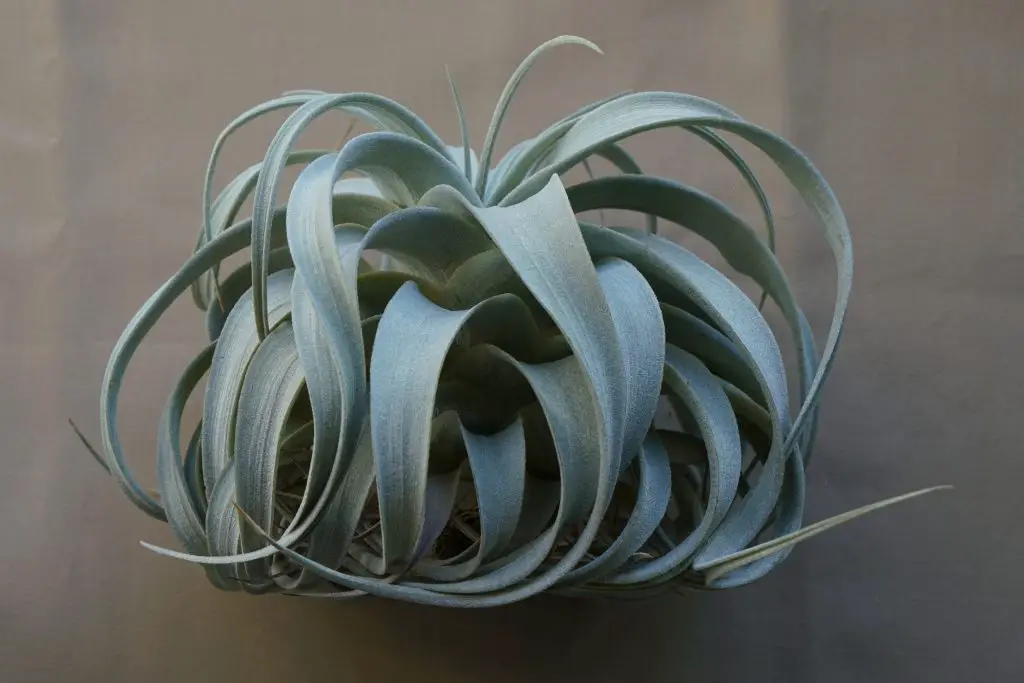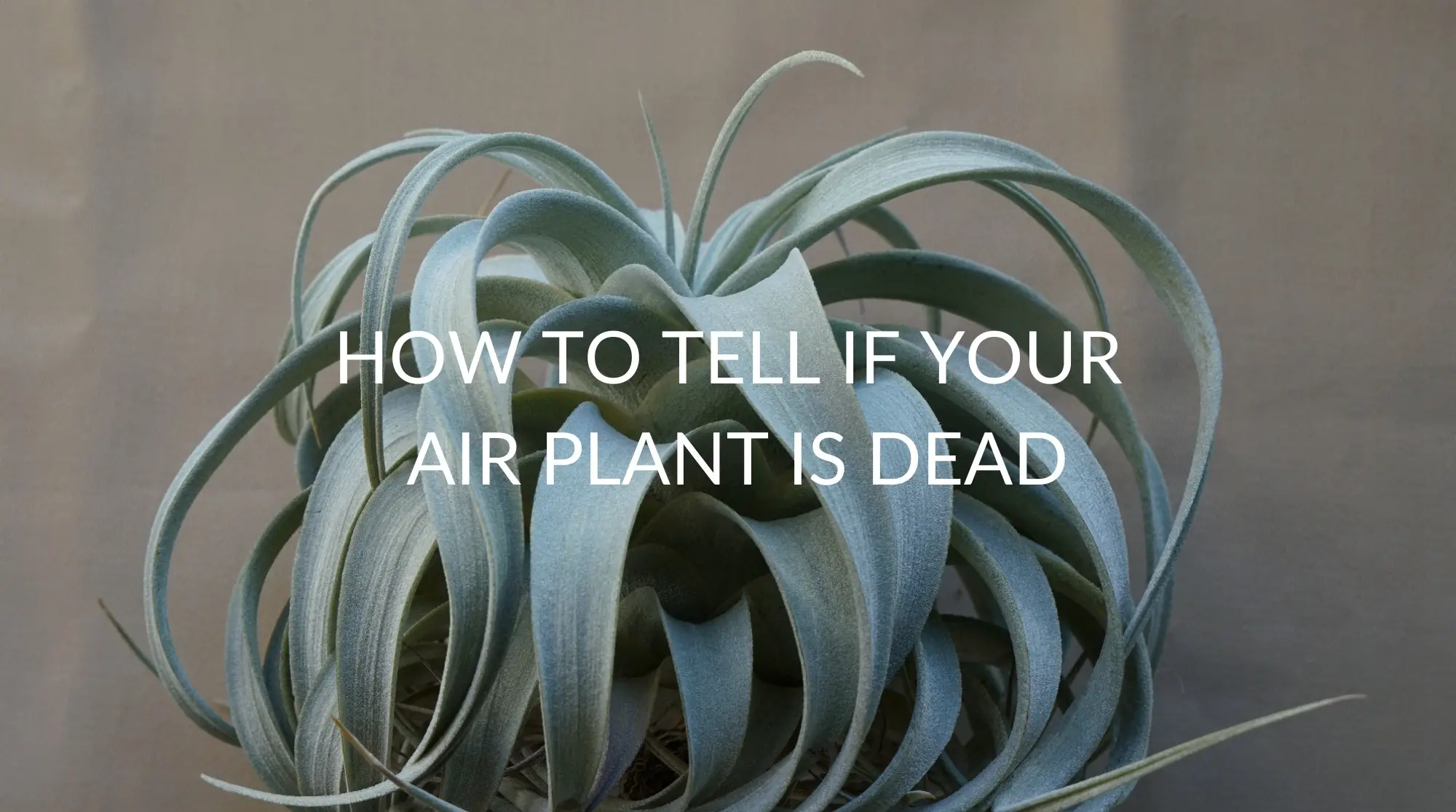Air plants require little care. However, if yours are drooping, discolored, or shriveled, they may require special attention. Fortunately, revitalizing air plants is not difficult. Two simple remedies are trimming off the dead, damaged branches or soaking the plant in water.
Continue reading to learn more about the tell-tale signs to determine whether your air plant is dying, the causes, how to revive your air plant, and more.
How Can You Tell If Your Air Plant Is Dying?
Examine the Colour of Your Air Plant’s Leaves
Air plants may not require a lot of water to keep healthy, but they do require just the correct quantity. The discoloration of the leaves is one indicator of dryness in air plants. When an air plant is not given enough water, its leaves might become brown or lose their unique radiance.
You may also note that the brown tips of the leaves have a crinkled feel and come off when touched. You must water your air plant more regularly to fix this problem.
On the other hand, discolored leaves can also indicate that the plant is getting too much water. If this is the case, and watering hasn’t helped, removing the air plant from the unit and draining any extra moisture will assist.
Leaf discoloration may also indicate that your air plant is exposed to too much sunlight. You may see a huge number of discolored or even dead leaves if your air plant has blossomed. This is totally normal, as the air plant is now devoting a significant portion of its energy to a new crop of young air plants.
Examine the Shape of Your Air Plant
When there is evidence of interior suffering, a plant’s form will often change. Since an air plant does not require soil and is exposed to sunshine, this might be a sign of too much or too little water.
Although photosynthesis provides the bulk of a plant’s nutrients, moisture is still required for the plant to synthesize those nutrients correctly. When there isn’t enough water, an air plant will coil up into a u-shape because it doesn’t have enough necessary nutrients to sustain its own weight.
If you detect this form, be sure to water your air plant. It’s an indication of excellent health if your air plant has a straight form. If you have a Tillandsia xerographica, leaf curling is common, especially as the plant grows, but the stem should always remain straight.

Why Do My Air Plants Keep Dying?
You May Be Underwatering Your Air Plants
If the leaves of your air plant curl up in a U-form, this indicates that it needs to be watered. If your air plant needs water, the leaves may also droop. Browning of the tips of an air plant’s leaves occurs when it is submerged. When their leaves become too dry, they may wrinkle.
Your May Be Overwatering Your Air Plants
Overwatering and decay are two of the most prevalent causes of air plant mortality. It is the most common cause of mortality in Tillandsia plants. The major cause of this harmful problem is overwatering your plants.
Allowing water to collect within the plant can cause it to decay soon. The appearance of black or purple colour at the plant’s base is a tell-tale symptom of a decaying air plant.
You May Not Be Exposing Your Air Plants to Enough Light
Just like other plants, an air plant needs adequate light. Set up your air plants where they can get a few hours of bright, indirect sunshine each day. On average, this takes three to four hours. Your best chance for getting enough light for your plants is a south or west-facing window. If natural illumination is insufficient, artificial grow lights can be used instead; they perform just as well.
How To Tell If Your Air Plant Is Dead?
Your Whole Air Plant Falls Apart During Trimming
If you are trimming your air plant and the entire thing breaks apart, you have a dead air plant that has sadly perished. With proper care, your air plant will live even if only a few leaves fall off and the inside leaves remain green and healthy.
Your Air Plant Breaks When You Touch It
While air plants are typically delicate to the touch, you should be able to pick up and move a healthy air plant without it crumbling in your hands. However, if the air plant begins to fall apart when handling it, it may have completely dried out and be unrevivable.
In order to save your air plant, try re-humidifying it if there hasn’t been too much damage. Nonetheless, collapsing air plants are frequently irreparably ruined.
Your Air Plant is Emitting a Foul Smell
If your air plants have a stale water scent, it might be an indication that they are getting too much moisture. This can give off an unpleasant musty odor, increase the likelihood of fungal development, induce root rot, and even kill your air plants.
If your air plants are emitting a foul odor, take urgent action to rescue them by cutting any damaged leaves and allowing them to dry.
Your Air Plant Looks Rotten
If your air plant is coming apart or appears to be rotting, it most likely has damp rot at the base caused by overwatering. It might also be caused by a lack of light and air exchange or by displaying air plants in moist circumstances.
One of the most common reasons for air plant degeneration is overwatering. While overwatering isn’t a regular issue with air plants, retained water is the main cause for concern. When it comes to watering air plants, they often absorb only what they need.
If you take your air plants from the water, allow them to dry, and then exhibit them on a regular basis, you should have few difficulties. Rot, on the other hand, can occur if you have just watered your air plant and there is residual water between the leaves.
Can You Revive a Dying Air Plant?
If they’re thirsty enough, air plants will become limp or brown. It’s critical to figure out why they’re ailing in the first place before treating them.
When an air plant is left without water for an extended period of time, its leaves get shriveled and curled up. It may be tough to revive the entire plant if it appears to be injured. However, there is potential if you notice flashes of vibrant color on the leaves.
How Can I Get My Dying Air Plant Back?
Reviving Your Air Plant by Soaking It Overnight
If you want to resuscitate your air plant, the first thing you should do is soak it overnight. Immersing your plants underwater for 6-8 hours will allow them to absorb all of the moisture and nutrients.
The greatest technique of soaking, however, is to do it overnight. To begin, fill a large bowl halfway with lukewarm water and deep enough to submerge the entire air plant. The water level should be 1-2 inches below the bowl’s rim. This will ensure the plant’s uniformity and enough hydration.
Shake off any excess moisture or wetness on your air plant before taking it from its bath. Allow for 4-5 hours of drying time in a well-lit area. This step is critical since allowing the wetness to remain can lead to the death of an air plant. Dehydration is an issue, but so is over-watering.
Lay down a couple of paper towels and place the air plants on top of them. Turn on a medium-low fan or hang them to dry in a light area. It’s conceivable that soaking them only once won’t be enough. After the overnight soaking, check the air plant for leaf curling 2-3 days later.
Reduce the Amount of Damage to Your Air Plant by Trimming
Keeping an air plant alive by removing any dead leaves that have begun to decay is a natural and straightforward method. Allowing your air plant to cling to damaged or dead leaves might prevent airflow and sunlight absorption.
Newer, stronger leaves develop in their place when dead leaves are removed. Even though air plants rely on their environment for nutrients and moisture, this is critical. Removing the dead leaves may be all that is required to bring the plant back to life.
You’re in for some terrible news if plucking at the dead leaves causes the entire plant to split apart. It’s conceivable that your air plant has already perished if this happens. Looking for green, healthy leaves is the key to revitalizing the plant. If none exist, the air plant will very definitely have to be decommissioned.
Recap
Even though air plant care is simple and low maintenance, they can occasionally appear sickly or limp. If you see any of these symptoms, realize that the culprit might be dehydration. Fortunately, by soaking your air plant overnight, cutting the dead leaves, and treating it with cinnamon, you may prevent the plant from dying.

